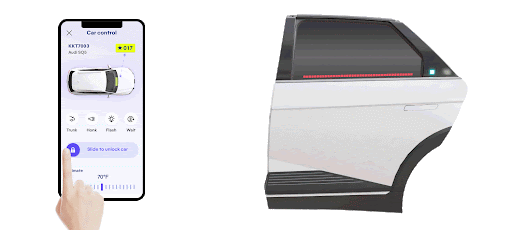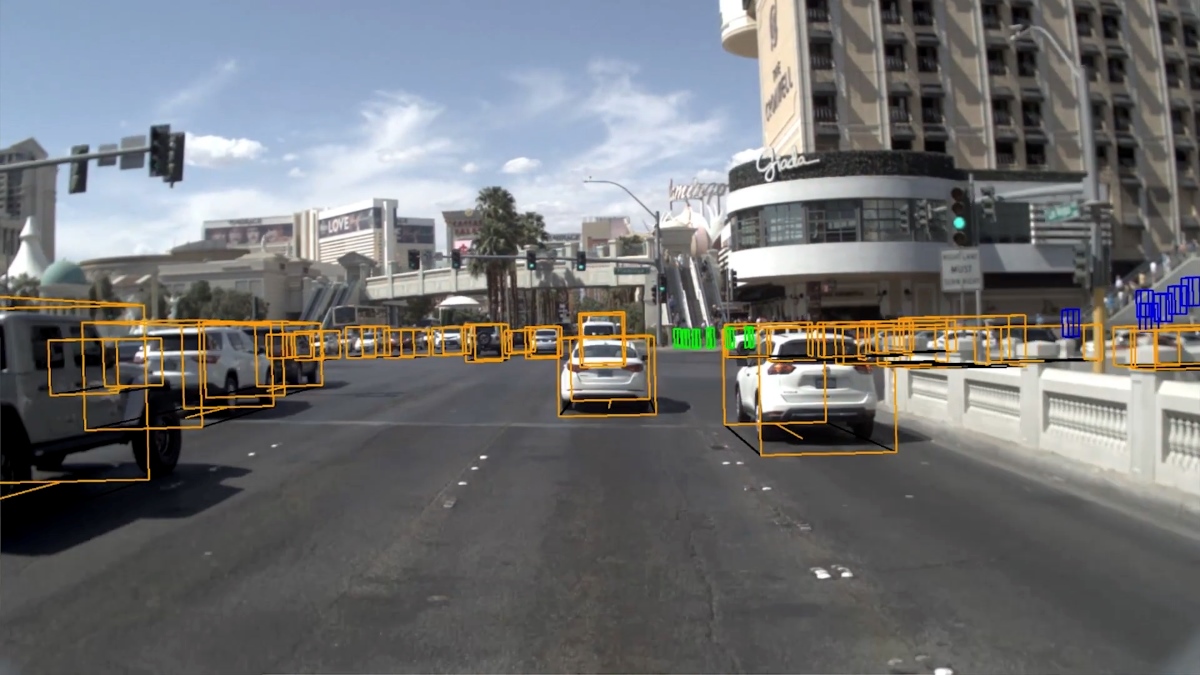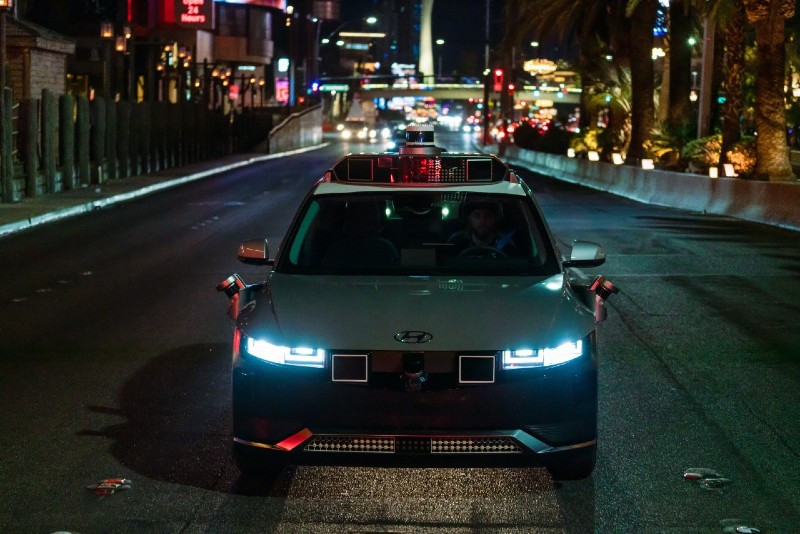We've long been promised the luxury of kicking back and reading a book while a technologically advanced car brings us where we want to go. Not only does this technology now exist, these vehicles are already on the road in a number of U.S. cities.
Our 2021 Consumer Mobility Survey told us that consumers still have questions about the safety of driverless vehicles, as well as the technology that makes it all possible. That makes sense: very few people in the world have ever ridden in a vehicle without a driver behind the wheel.
We’re introducing “DriverlessEd,” a series to help people who may be interested in autonomous vehicles better understand this emerging technology and its benefits. Just as many of us learned about vehicle safety and operation during a driver's ed class, we hope DriverlessEd will improve the understanding of technology like ours.
WHAT IS A DRIVERLESS VEHICLE?
A driverless vehicle can travel from Point A to Point B, from start to stop, safely without the help of a human in the vehicle. It uses a package of sensors (including cameras, radars and lidars), and a highly advanced, machine learning-trained onboard computer system to understand its surroundings and navigate through traffic.
Here’s what a driverless vehicle isn’t: a vehicle with a collection of sophisticated driver assist features, such as a parking assist system, or adaptive cruise control. These increasingly common types of features are known as Advanced Driver Assist Systems, and still require a human driver behind the wheel ready to take control at any moment.
Motional, for example, is developing robotaxis, which will be able to pick up and drop off passengers, as well as deliver online food orders, without a human driver behind the wheel.
Bottom line: An autonomous vehicle, such as a robotaxi, can safely drive from Point A to Point B, while the passenger sits in the back seat reading a book, watching a movie, or simply looking out the window.
(The difference between autonomous vehicles, and vehicles with driver assist features – even really impressive ones that can steer a car for miles on open highways – will be discussed in more detail in DriverlessEd, Chapter 2.)
ROBOTAXIS? WHY?
Millions of people lack access to reliable public transportation, and there’s a need for better ways to get around.
Many others own a vehicle just because they have no other option. And having the ability to choose whether to take a personal vehicle to the store or leave it at home is a choice many people want to have.
A robotaxi is a fully autonomous vehicle that uses a suite of sensors and an onboard, machine learning-trained computer system to safely transport passengers, from pickup to dropoff, without the help of a human in the vehicle or controlling it remotely. Also, when robotaxis become part of our everyday routines, the result will be safer roads (robots will never drive distracted, drowsy, drunk, or angry) and cities will have increased ability to reclaim public areas currently reserved solely for parking.
A Motional robotaxi will also be part of a larger fleet of commercial vehicles available through ride-hailing apps. Eventually, a fleet will include hundreds, or even thousands, of robotaxis covering a single city.

Robotaxi passengers will be able to use their phone to unlock their driverless vehicle.
Riding in a Motional robotaxi will feel similar to riding in a standard taxi or ride-hail vehicle driven by a human. We’ve taken feedback from tens of thousands of paying customers and test riders to fine tune every part of the ride, such as how passengers summon the vehicle, how to open the vehicle doors, how riders let the vehicle know they’re ready to start their trip, and even how the vehicle takes turns to ensure the ride is as comfortable as possible.
SAFETY
“Are driverless vehicles safe?” is the number one concern people have; in fact 67 percent of respondents to our 2021 Consumer Mobility Report said safety was their number one uncertainty about driverless technology. Just 18 percent said they’d be comfortable riding in an AV today. Another 45 percent said they don’t feel enough safety testing has been done on the technology.
Safety is our number one focus, too. It’s the first goal mentioned in our mission statement. And we’ve been working for years to make our driverless vehicles safer than human drivers. We know we have to earn the trust of our passengers so they’ll want to try our robotaxis again.
Transportation Secretary Pete Buttiegieg was frank recently when asked about autonomous vehicle safety: “Human drivers kill about 35,000 people a year. We would never tolerate that with any kind of new product or technology, so it’s got to be better."
Here’s where we’re starting from: without a human driver behind the wheel, robotaxis will never operate drunk, drowsy, or distracted. They’ll never develop road rage after a driver cuts them off. And they’re programmed to follow the rules of the road, meaning they won’t speed, they’ll actually stop at stop signs, and won’t tailgate the vehicle in front of them. These pre-programmed rules alone may save hundreds of thousands of lives and prevent millions of injuries.

Some states and cities require AV companies to undergo a permitting process before driverless vehicles can ever roll onto public roadways. This process can include meeting strict safety standards and proving driverless vehicles the company’s AVs can operate safely without a human behind the wheel.
We went a step further by voluntarily spending two years evaluating our safety approach, including hiring an independent party that specializes in autonomous vehicle systems safety to review every aspect of our technology. In the end, we passed with flying colors. So far, Motional AVs have documented more than 1.5 million miles on public roads without a single at-fault accident.
Bottom line: People won’t ride in driverless vehicles if they don’t believe the vehicles are safe. This is why Motional isn’t just meeting safety standards, but going above and beyond, to validate the safety of our AVs.
WILL ROBOTAXIS REPLACE MY PERSONAL VEHICLE?
While a robotaxi fleet may make it possible for some people to choose to drop their personal vehicle, they’re not meant as a replacement for everyone.
Motional is a joint venture between Hyundai, one of the world’s largest auto manufacturers, and Aptiv, a global automotive technology supplier. We like driving. And as our Consumer Mobility Survey told us, many people do too. In fact, 55 percent of people said they own a car because they enjoy driving and owning a personal vehicle.
This is really about options. Consumers have lots of options when they go to a supermarket. We feel people should also have options when traveling to and from the supermarket as well. A robust, multimodal transportation network would allow people to choose between robotaxis, human-piloted ride-shares, privately owned vehicles, public transit, bikes, scooters, etc., all working together for more effective, safer, sustainable mobility options.

That same survey also told us that 58 percent own a vehicle because they would otherwise have no other way of getting around. Nearly 40 percent said they don’t have access to reliable mass transit. And 28 percent said they’d give up their vehicle if there were ample transportation options that allowed them to get where they need to go.

Bottom line: Owning a personal vehicle can be enjoyable, but it shouldn’t be the only option a person has to get around town. Robotaxis would give people the option to leave their car or truck at home while they run a few errands or enjoy a night out.
EQUITY AND SUSTAINABILITY
How would things be different if more people had access to safe and reliable transportation?
Nearly a quarter of Americans surveyed said they would be interested in taking a robotaxi because they have mobility issues or are unable to drive because of physical or mental impairments. Motional has been working with groups such as the Institute for Human-Centered Design to improve vehicle accessibility. And without human drivers choosing which fares they take, robotaxis will also help eliminate equity issues such as driver bias, ensuring passengers of all socioeconomic backgrounds are served.
In addition, robotaxis could change the way cities design commercial centers and downtown districts. Think about it this way: the average vehicle sits parked 95 percent of its life. How could a streetscape change if a downtown center needed 25 or even 50 percent less parking?
Research suggests that a sizeable fleet of robotaxis could help reduce the number of personal vehicles in a market. One study that looked at mobility options and traffic data in a major international city and determined the city’s transportation needs could be served by a robotaxi fleet one-third the size of the total number of private vehicles.
A University of Texas study estimates that each autonomous robotaxi in a larger fleet could replace nine personal vehicles. If more people are able to give up their personal vehicle, or leave their vehicle at home while they go shopping, that’s less pavement and infrastructure needed to park cars and trucks.

A stretch of Main Street in Santa Monica seen in 2019 (left) and after restaurants were allowed to temporarily take over parking spaces to expand outdoor seating (right). Photo by Sean Paul Franjet @SPFstudios, used courtesy of Main Street Santa Monica.
We got a glimpse into this recently when some cities allowed reopening restaurants to take over parking spaces to expand outdoor dining. Nearly half of our survey respondents said their community has used outdoor spaces in new ways during the pandemic, with 34 percent saying repurposing parking lots and other parking-centric infrastructure benefited their community.
Bottom line: Robotaxis have the capability to provide more reliable mobility options to all people, give people the choice whether to own a personal vehicle, and allow cities to rethink how they redesign public spaces.
WHAT’S NEXT
In future chapters of DriverlessEd, we’ll go into further detail about how AVs are different from vehicles with driver assist technology; discuss how robotaxis are able to see, think, and respond to what’s happening around them; how we’ve used feedback from thousands of test riders to make sure passengers feel comfortable riding in our driverless robotaxis; and how we’ll make a fleet of robotaxis available to city residents in the not so far future.
Have a question about robotaxis, how they work, and how they are the future of mobility? Tag us at #DriverlessEd on Twitter and Instagram or DM @motionaldrive.
- Autonomous Miles - Miles driven by Motional test vehicles while in autonomous mode, meaning a safety operator was in the vehicle ready to take over, but the vehicle was navigating on its own
- Autonomous Vehicle (AV) - A vehicle capable of traveling from Point A to Point B without a human driver behind the wheel
- Robotaxi - An autonomous vehicle for hire that can be summoned on-demand by passengers
- Multi-modal transportation - A mixture of transportation types capable of being used safely by a population including walking, cycling, mass transit, personal vehicles, and rail-hail vehicles.

